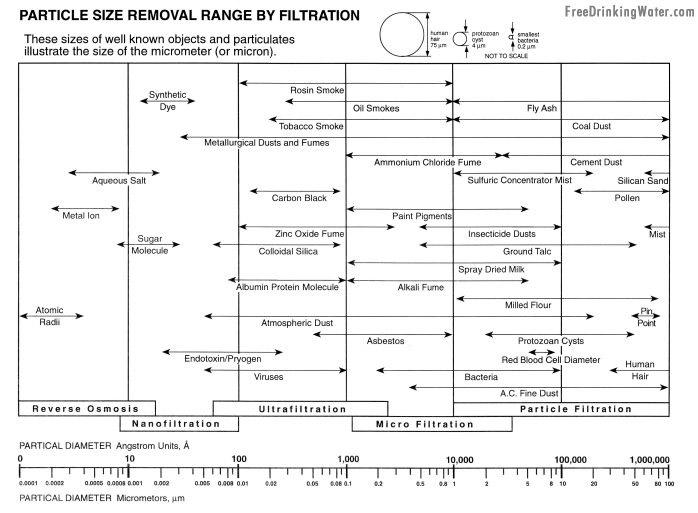
- The TRUTH About America's Water
- Water Pollutants that Cause Illness
- Are Minerals in Water Important for Health?
- Top 5 Drinking Water Contaminants
- Do I Need a Whole House Water Filter?
ARE MEMBRANE FILTRATION SYSTEMS CATEGORIZED BASED ON THEIR EFFECTIVENESS IN REMOVING DIFFERENT PARTICLE SIZES FROM WATER?

In short, yes. Although there is no exact industry-standard, membrane systems are generally placed into one of five categories based on particle size removal. These categories as they go from larger to smaller particles are generally referred to as particle filtration (PF), microfiltration (MF), ultrafiltration (UF), nanofiltration (NF), and hyperfiltration (reverse osmosis or RO). There is some overlap between these categories with PF generally referred to as macro particle filtration and effective for removing particles larger than 1.0 micrometer in size. Microfiltration (MF) gets into the sub-micron size and into the macromolecular range and is effective for removing particles within the range of 0.05 to 2.0 micrometers.
Ultrafiltration (UF) goes into the molecular range and removes particles within the range of 0.003 to 0.1 micrometers in size. Nanofiltration (NF) can also remove individual molecules within the range of 0.0008 to 0.006 micrometers in size while hyperfiltration (RO) units are effective within the range of 0.0001 to 0.001 micrometers and are effective even in removing ionic salts from water.


